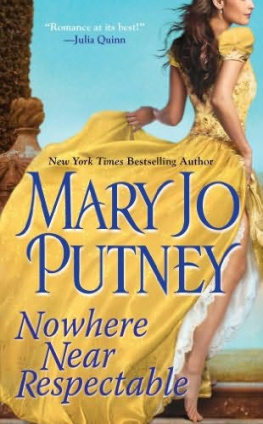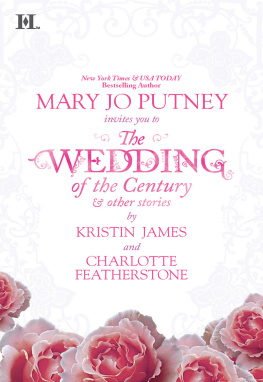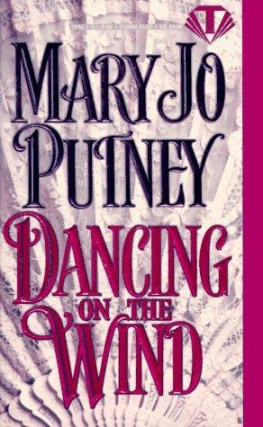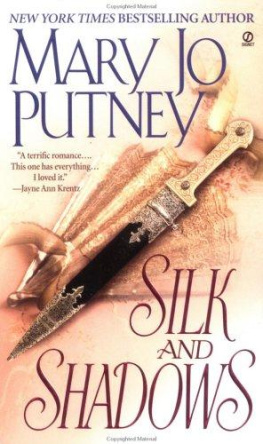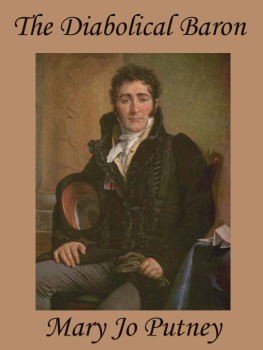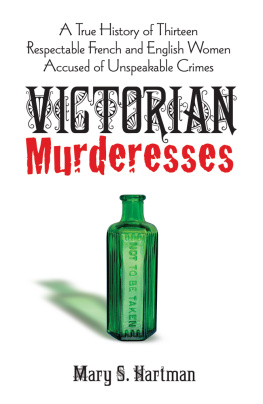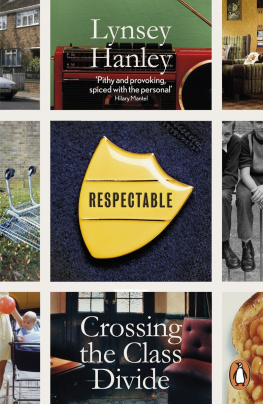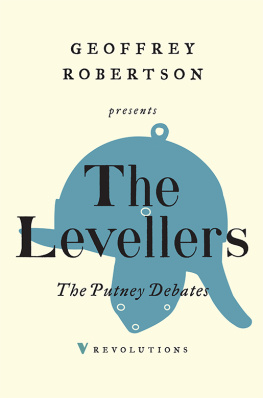Epilogue
Regular newspaper notices of the wedding were as discreet and formal as one might expect, but a popular womans magazine ran a longer story with the details their readers loved. Their society reporter wrote:
The nuptials of Sir Damian Mackenzie and Lady Kiri Lawford were celebrated at St. Georges, Hanover Square, followed by a sumptuous wedding breakfast at the home of the brides brother, the seventh Duke of Ashton. In an unconventional touch, the bride was given away both by her stepfather, General John Stillwell, the Hero of Hind, and her mother, Princess Lakshmi Lawford Stillwell, the dowager Duchess of Ashton.
Standing up with the happy couple were the brides sister, Miss Lucia Stillwell, and the grooms brother, Major Lord Masterson. His lordship was most dashing in his scarlet regimentals and with his arm in a sling due to injuries suffered on the Peninsula in Noble Service to His Country.
The elderly widow who supplemented her income by writing such pieces paused to nibble on the end of her pencil. Since churches were places of public worship, she was free to attend the weddings, christenings, and funerals of the beau monde. With her gift for friendly chat, she could usually glean enough material from those in attendance to make it appear that she was an invited guest.
In this case, she wasnt sure if it was a war wound that Lord Masterson was suffering from. For all she knew, he might have fallen off his horse when drunk. But being wounded in service to his country sounded so much better.
She made a note to learn the name of his regiment later. Some details could be invented with no harm, but one must be accurate about military matters.
She wondered whether she should refer to the fact that the grooms birth had been... irregular. She found it touching that the half brothers were obviously close, but her editor wouldnt like any references to bastardy.
Best not to discuss the matter of Sir Damians reported death, either. She had no idea what the true story was, but his claim that hed woken up at St. Barts some weeks after a head injury sounded like pure gammon to her.
The Duchess of Ashton, a charming, gracious, and enceinte young woman with not a trace of haughtiness, had provided several good nuggets of information. The widow bent to her work again, writing very small because paper was expensive.
The happy couple met because Sir Damian attended the Westerfield Academy with the brides brother, the Duke of Ashton. Numerous other distinguished graduates of the school were present. The founder and headmistress, Lady Agnes Westerfield, traveled up from Kent as an honored guest.
The widow worked on the principle that one could never mention titles too often. In her final draft, she would reduce most of the titles to initials for discretions sake, but in this version, she preferred to write them out. Best not to reveal that the Westerfield Academy had been founded for boys of good birth and bad behavior. That would raise far too many questions in her readers minds.
Other guests included Lord Kirkland; Major Alexander Randall, heir to the Earl of Daventry, and his lovely bride, Lady Julia Randall; the Honorable Charles Clarke-Townsend and his wife and daughter; and the Honorable Robert Carmichael.
Should she mention the veiled young guest whod looked remarkably like Princess Charlotte Augusta? Tempting, very tempting, but the princess had obviously been attending in a purely private capacity. It wasnt wise to mention royalty when they thought they were being incognito.
Now for the part the widow liked best, which was describing the bride and groom.
The tall and splendidly handsome Sir Damian is a noted leader of fashion, and his military bearing gives evidence of his own Peninsular service.
Oh, a fine and dashing rogue he was, too! He reminded the widow of her own dear husband. When the officiating cleric had asked if anyone knew any reason the marriage should not take place, shed been tempted to stand up and object on the grounds that she wanted him for herself. She might have done so if she had been thirty years younger. Not that Sir Damian would look at anyone other than the bride he so clearly adored, and that was as it should be.
In a tribute to her mothers royal Hindoo blood, the demure and beautiful bride wore a magnificent scarlet silk sari with stunning borders of intricate golden embroidery. Her gold necklaces, earrings, and myriad bangle bracelets were also of Hindoo origin.
The widow had been a little shocked to see what looked like intricate brown tattoos on the brides slim hands and arms, but the Duchess of Ashton had explained that the designs were temporary and part of Indian wedding tradition.
Nor was the widow convinced of the brides demureness. Shed been close enough to the altar to hear General Stillwellsuch a fine-looking man, even at his age!tell Sir Damian that he hoped her husband would do a better job of controlling Lady Kiri than her father had. Sir Damian had just laughed and taken firm hold of his brides hand.
The widow suspected that there hadnt been any surprises on the newlyweds wedding night. When theyd come laughing down the aisle as man and wife, the widow had the distinct impression that the couple had sampled the goods and were well pleased with what theyd found. Not that she was one to judgeshe and her future husband had anticipated their wedding vows with enthusiasm and as much frequency as theyd been able to manage.
The happy couple will be spending the Christmas holidays with family and friends at the Duke of Ashtons seat, Ralston Abbey, in Wiltshire. In future they will reside in London and Wiltshire. The union of Sir Damian and Lady Kiri was a splendid joining of East and West that all may rejoice in.
Pleased with her efforts, the widow set down her pencil with a smile. She knew happily ever after when she saw it.
Historical Note
The real Princess Charlotte was much as I have depicted hera good-hearted girl who had a horrible upbringing, caught between two parents who despised each other. She seems to have lacked the arrogance that usually goes with royalty, and was known to happily chat with the village baker when on holiday in a seaside town.
Charlotte had a rebellious streak, and sneaking off at night to attend a masked ball is by no means unlikely, based on her track record. She did find happiness briefly in her marriage to Prince Leopold of Saxe-Coburg-Saafield, but sadly, she died in childbirth at the age of twenty-one due to bad medical treatment. If shed had a good midwife, she probably would have been fine.
The doctor whose incompetence cost the lives of Charlotte and her son later committed suicide. It is known as the triple obstetrical tragedy.
Since she was the heiress to the throne, her death spurred a frantic rush by her royal uncles to find legitimate wives so they could father heirs to the throne. (Her many uncles preferred mistresses whose children were ineligible to inherit.) Her first cousin, Queen Victoria, would never have been born if Charlotte hadnt died so young.
The State Opening of Parliament is an enormously grand affair of the sort the British do so well. Princess Charlotte did indeed attend her first State Opening in 1812 and she sat on the Woolsack, luckily without my added melodrama. She was cheered as she arrived. Her father was not. The London public had good taste.

